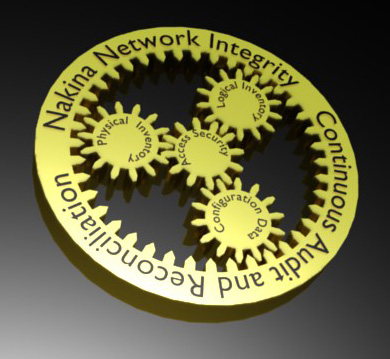By: Doug Bellinger, Nakina Systems

Industry best practices in telecommunications have, for many years, been
tolerant of data integrity levels of 60 to 80 percent. As long as services
operated in silos and operations staff could keep up with network growth, this
was expensive and inefficient, but not mission critical. Nakina Systems has a
unique perspective on why this can no longer be tolerated, and how a holistic
approach to physical inventory, logical inventory, and network configuration can
significantly improve data integrity levels. With this approach, it is possible to
achieve data integrity in all of these areas, across all of the network elements
and systems. This is how data integrity becomes Network Integrity.
Recent experiences with wireline, wireless, and cable operators have shown that
two important things have changed:
- Everything is becoming IP connected, with all services sharing common IP infrastructure.
- The race to add capacity, especially to mobile data networks, is pushing traditional approaches beyond their breaking points.

Although “Next Generation“ OSS and BSS systems have automated the most repetitive and expensive tasks at the service provider, they have failed to deliver Network Integrity. The reasons for this include:
- Each OSS or BSS has its own abstract view of the network.
- Each system tends to “fire and forget“ its configuration changes, assuming that a successful configuration will be permanent.
- Break-fix cycles, capacity expansion, network upgrade, and performance management continue to require manual interaction that is error-prone.
- Asset utilization was unacceptable;
- Order fallout was at much too high a level;
- Outages became too large, frequent, or embarrassing to manage.





